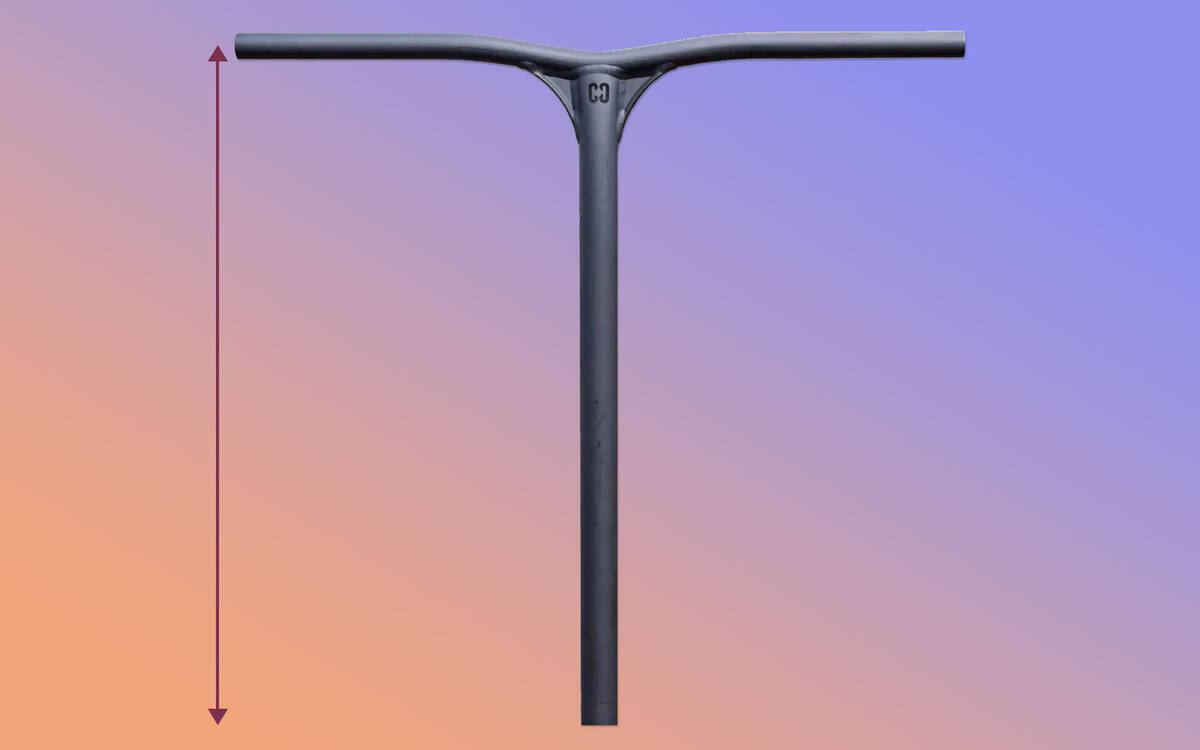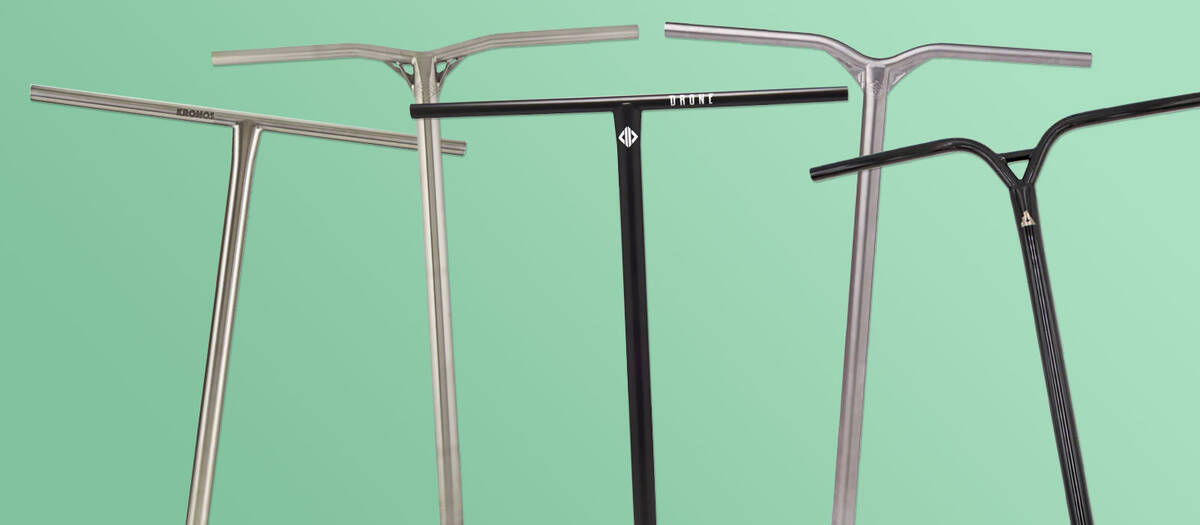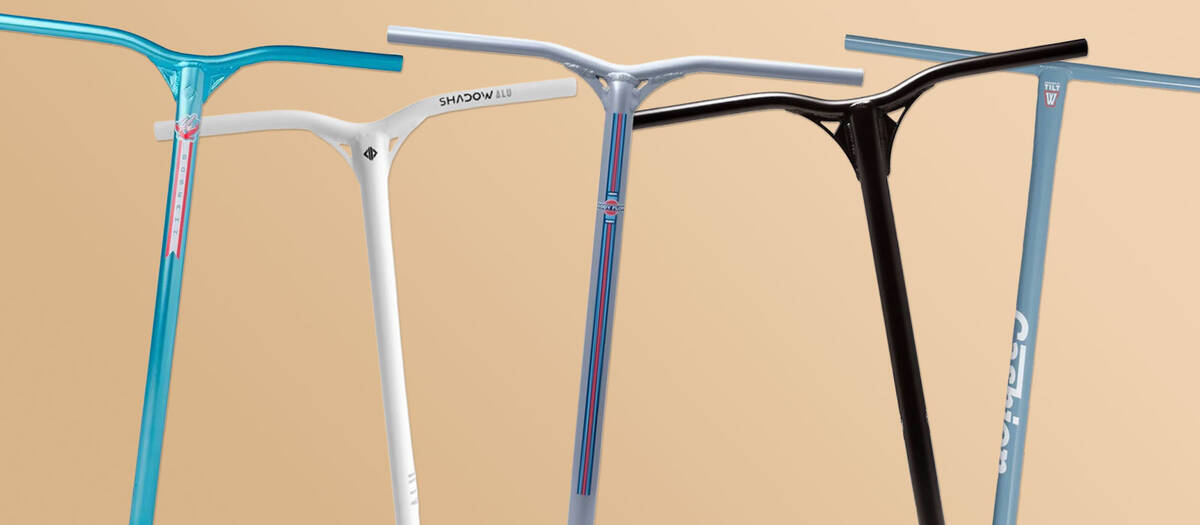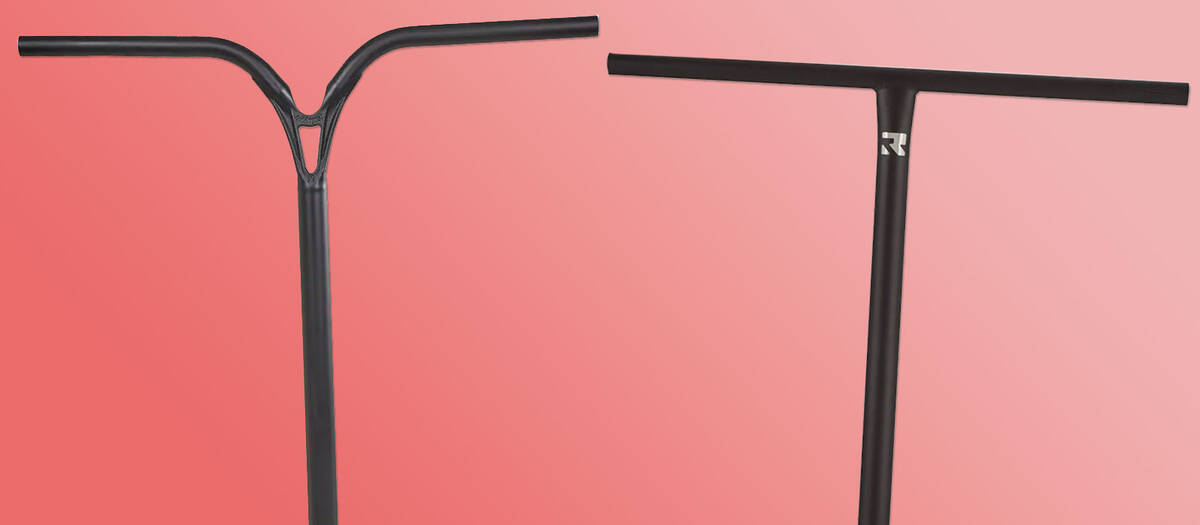Buying scooter bar
Welcome to our comprehensive buyer's guide to pro scooter bars. Our goal is to help you navigate the wide array of options available, making it easier for you to choose the right scooter bar.
We will answer the questions you might have before purchasing a new pro scooter bar. You will learn about central aspects like bar height, compatibility, and bar material. Get ready to upgrade your scooter with the best bar you can find!
В этом гиде
В этом гиде
How to Find the Right Scooter Bar Height?

Pro scooter bar height plays a significant role in selecting the right bar. The height of your scooter bar will affect your riding style and comfort a lot, so it is a good idea to pay extra attention when selecting bar height.
First of all, bar height is a matter of personal preference. For beginners who have not established their own personal preferences yet, certain guidelines make choosing the right bar height easier.
So, how tall should your scooter bars be? Pro scooter bars should ideally reach somewhere between your hips and navel when standing on the ground with the scooter deck between your feet. This height ensures comfort and optimal leverage for performing tricks. With the bars at this height, you can ride with a straight back while still having plenty of leverage. If you're a beginner and torn between two bar heights that both fall within the recommended range, we suggest opting for the taller one as it generally offers better control.
If you consider sizing up or down when purchasing new scooter bars - or if you're unsure whether to opt for a taller or shorter version of a specific bar - this table may be of help.
| Aspect | Taller Bars | Shorter Bars |
|---|---|---|
| Comfort | Less strain on the back due to the more upright position | Requires the rider to bend forward, potentially causing increased strain on the back |
| Tricks | More control over grinds and manuals | More control when throwing the scooter around in the air |
| Stability | More stable | More agile and responsive |
| Style | Street (generally speaking) | Park (generally speaking) |
How to Measure Scooter Bar Height
When purchasing a scooter bar, you'll find the height listed in the product specifications. However, this measurement alone doesn't provide an exact answer regarding how tall your scooter will be once the bar is mounted.
To accurately determine the total height of your scooter with the new bar in place, measure from the bottom of the front wheel to the point where the bottom of the scooter bar will rest when it's mounted. The position of this point depends on the compression system of your scooter.
How to measure overall scooter height:
- SCS: Measure from the bottom of the front wheel to the middle point of the clamp. Add this measurement to the bar height to get the total scooter bar height.
- HIC/IHC/ICS: Measure from the bottom of the front wheel to the bottom of the clamp. Add this measurement to the bar height, and you'll know your total scooter height after adding the new bar.
If you need more info, we are happy to help. Here's a couple of useful links:
How to Choose the Right Scooter Bar Width?

When selecting the width of your scooter bar, you should match the width of the bar to your own personal shoulder width. Measure the width of your shoulders by going from shoulder to shoulder and then add an inch or two. This will help you find a bar width that doesn't make you uncomfortable. Bars that are too narrow might look strange and could lead to discomfort in your wrists and shoulders. Conversely, bars that are too wide can hinder your ability to do certain tricks, and having your hands too far apart can also be uncomfortable for your shoulders and wrists.
If you are considering whether to opt for a narrower or wider scooter bar, consider the following factors:
- Wider bars: More stable and easier to catch
- Narrower bars: More agile and easier to spin
Scooter Bar Diameter: Oversized vs Standard Scooter Bars

Scooter bar diameter is defined as either standard or oversized:
- Standard: 32 mm outer diameter / 28 mm inner diameter
- Mix: 35 mm outer diameter / 28 mm inner diameter (most aluminum bars)
- Oversized: 35 mm outer diameter / 32 mm inner diameter
The main difference between standard and oversized scooter bars lies in their weight and strength characteristics. Generally, oversized bars are slightly stronger and heavier, while standard-sized bars are lighter and weaker.
Aluminum bars are a bit of a joker in this regard because they require extra material to be strong enough for heavy shredding. Most aluminum bars on the market have a 35 mm outer diameter and a standard 28 mm inner diameter.
Compatibility of Scooter Bars
When selecting a new scooter bar, it's crucial to ensure compatibility with the rest of your setup. You can determine the compatibility of a scooter bar by reviewing its specifications to see which compression system it supports.
- If you're running an SCS setup, you need to make sure that the bar doesn’t have a slit - You can use an SCS adapter to eliminate the slit
- If you have a standard size SCS clamp, your bar needs to be standard outer diameter
- If you have an oversized SCS clamp and want to ride a standard size SCS bar, ensure that you have a proper SCS clamp shim
|
Compression System |
Standard Bars 32 mm outer diameter 28 mm inner diameter |
Oversized Bars 35 mm outer diameter 32 mm inner diameter |
Aluminum Bars 35 mm outer diameter 28 mm inner diameter |
|---|---|---|---|
|
SCS Scooter Bars |
Compatible if:
|
Compatible if:
|
Compatible if:
|
|
HIC Scooter Bars |
NOT COMPATIBLE |
Compatible if:
|
NOT COMPATIBLE |
|
IHC Scooter Bars |
Compatible if:
|
NOT COMPATIBLE |
Compatible if:
|
In case you are running an SCS-setup and fall in love with a bar that has a slit at the bottom, you can buy an SCS Sleeve (also called an SCS Bar Adapter) in our category of Scooter Compression, but many HIC or IHC bars include an SCS adapter. Look for them here:
We have several guides that are relevant for the subject of pro scooter compression and the compatibility of the different parts that are . Find answers to your questions in these guides:
Titanium Scooter Bars

Titanium bars are as light as aluminum bars and as strong as steel bars. Therefore, they have become a popular choice among experienced scooter riders. The overall reason to buy a titanium bar for scooters is the magnificent strength-to-weight ratio. You won’t have to worry about your bars breaking during wild sessions, and since it is so light, they will not hinder your performance.
Titanium is pricier compared to chromoly or aluminum, and its exceptional strength and properties mean that producing titanium bars requires more resources. Consequently, titanium bars tend to come with a higher price tag.
Riders new to titanium bars are often surprised by their ability to flex. Although it may take some time to get used to, this flexibility can ultimately prove to be advantageous for your riding style. As you become accustomed to the flex of titanium bars, you may begin to view it as an advantage, as it absorbs some of the impact traveling through the bar upon heavy landings.
Another notable difference between titanium bars and steel or aluminum bars is that when titanium bars eventually break (after years of heavy use), they do not gradually weaken and bend. Instead, they tend to snap. If you notice any signs of wear on your titanium bars (which typically only occurs after years of heavy use), it's advisable to replace them promptly.
Pros:
- Durable
- Lightweight
- Flexibility
Cons:
- Pricey
- Flexibility (some riders dislike it)
- Susceptible to snapping when they eventually break.
You can filter our selection of bars by material to see all our titanium bars:
Aluminum Scooter Bars

Aluminum pro scooter bars are prized for their low weight, making them ideal for riders who prioritize agility and maneuverability. The low weight of aluminum bars can be particularly advantageous when executing complex tricks and maneuvers in the air. Additionally, aluminum bars are often more affordable, making them a budget-friendly option for those seeking trick-friendly bars.
However, the limited strength of aluminum bars is a notable disadvantage. They are more susceptible to bending or breaking compared to steel or titanium bars. To address this weakness, aluminum bars often feature stabilizing features such as gussets or wedges at the point where the pieces of the bars are welded, adding strength to the structure.
Pros:
- Lightweight
- Affordable
Cons:
- Less durable
- Rigid / no flexibility
If you wish to see our selection of aluminum bars, you can filter the category by material:
Chromoly Scooter Bars

Steel pro scooter bars, also known as chromoly bars, are highly esteemed for their remarkable durability and affordability. However, they do carry more weight compared to bars made from other materials..
Unlike aluminum bars, which often incorporate gussets or Y-shapes for added strength, chromoly bars can be manufactured in true T-shapes due to the inherent strength of the material.
Steel bars are commonly used in street setups, even by professional pro scooter riders. Not all riders prioritize ultra-lightweight setups, so whether you're a beginner or a seasoned pro, chromoly pro scooter bars are a reliable choice to consider!
To take away some of the extra weight, some chromoly scooter bars utilize butted tubing. This means that certain areas of the bars have thinner tubing to reduce overall weight while maintaining strength. Chromoly bars are well-suited for beginners, and you can find a chromoly bar that works for every compression system.
Pros:
- Durable
- Strong
- Affordable
- T-shape
Cons:
- Heavy
Head over to our selection of scooter bars and filter by material to see all our chromoly pro scooter bars:
Y-Bars or T-Bars for Pro Scooters?

T-bars and Y-bars derive their names from their distinct shapes. Choosing between them ultimately comes down to personal preference, as neither is inherently superior to the other.
T-bars are typically considered a bit weaker because they lack gussets or braces to reinforce the connection between the handlebars and the down tube. Consequently, T-shaped bars are often crafted from steel or titanium.
Y-bars, on the other hand, feature reinforcements that make them slightly stronger. As a result, aluminum bars are commonly designed in a Y-shape.
The decision to opt for T-bars or Y-bars is often influenced by a combination of factors, including aesthetics, personal preference based on how they feel during use, and alignment with a particular style or identity as a scooter rider. Ultimately, both types offer their own advantages and cater to different rider preferences.
Backsweep & Upsweep
Backsweep refers to the angle of the handlebar towards the rider, while upsweep refers to the upward angle of the bar. These features significantly impact the ergonomics of scooters, providing a more relaxed and natural position for the wrists.
Backsweep and upsweep are typically features of Y-shaped bars, whereas T-shaped pro scooter bars prioritize simplicity and a straightforward design.
Go and check out all our cool Y- and T-shaped bars:
